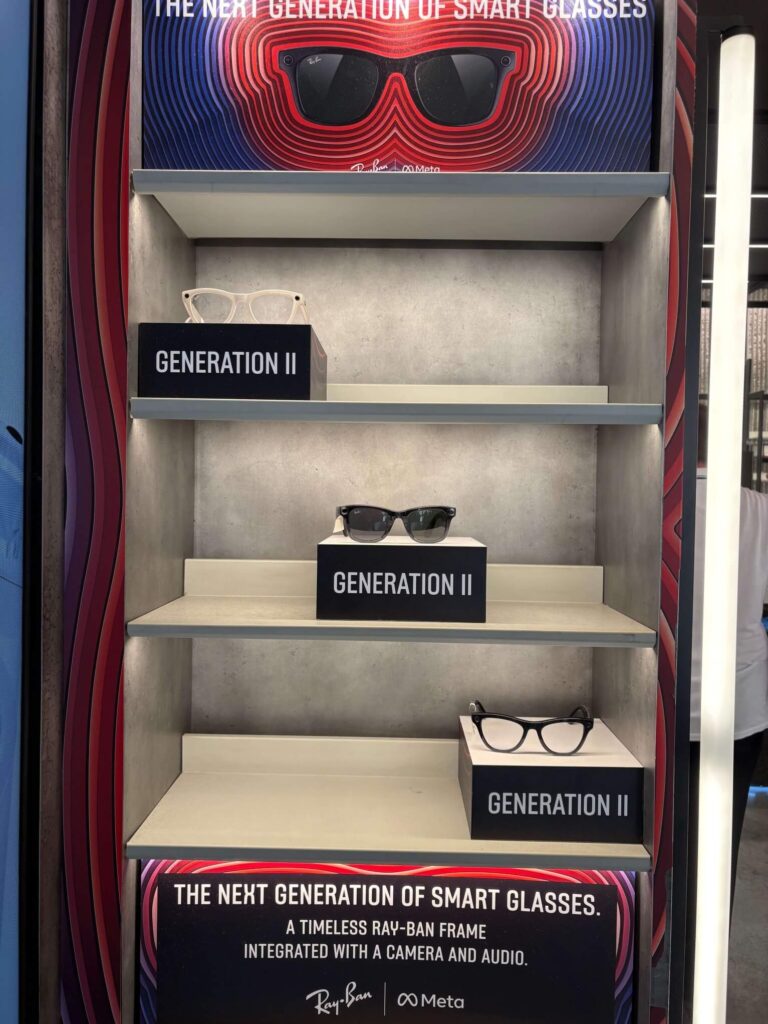Lining up on University Avenue in Palo Alto for one of the first Apple iPhones in the Summer of 2008 was memorable. You’ll be most likey reminded in years to follow of when you first walked past the Ray Ban sunglasses store as I did in Europe in July 2025 (taking this photo and buying a pair Ray‑Ban Meta AI glasses for €312 (excluding the 15% VAT rebate). It’s kind of cool, embedded AI, dual cameras, open-ear speakers, and hands-free voice control. Do I wear them? Not often as I prefer my Maui Jim’s and iPhone 16. Aren’t sunglasses designed to just keep out the sun and phones for talking / texting.
Yet taking photos / streaming video live is fun. Just need to hit the button on my Ray‑Ban Meta AI sunnies. Translating text on menu’s in Rome helped a little bit. I mean, you can just ask the waitor. Most people speak English right?
Meta is hoping to hit big with this consumer product which has Meta AI integrated, as more people start to use Generative AI apps like ChatGPT. Meta Quest sold around 500,000 virutal reality headsets in Q2, 2025. Compare that to the 45 to 50 million iPhones Apple sells each quarter.
Interesting Meta acquired a 3% stake in EssilorLuxottica (makers of Ray-Ban), worth roughly $3.5 billion in July 2025. Meta hopes to hit 10million sales in 2026.
Globally, around 157 million sunglasses (at an average ~$150 price point) sell each year. If Meta bring the price down, capture just 5% of that market, that’s nearly 8 million units per year—and billions in potential revenue. So will Meta / Ray-Ban sunnies sell like hotcakes? Ask Sergey Brin, co-founder who championed Google Glass which had a camera and Google Now Assistant built in.
The rise of AI glasses may actually decrease traditional website traffic—especially for search. With users asking Meta AI directly through voice commands (e.g., “What’s this building?”), the need to type queries into search engines or visit websites could decline.
One thing is for sure, AI interfaces disintermediating the web as we know if folks!







